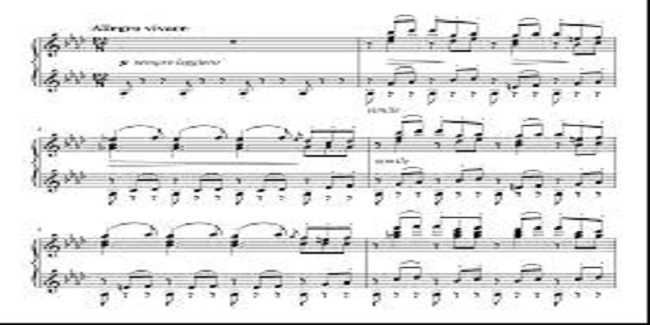Best Music Composition Services in Uttarakhand

In 1924, a sidekick of George Gershwin broadcasted that his new concerto wouldn’t look like anything anyone had heard and would finally change conventional music. The issue? The concerto hadn’t been created as of now — and Gershwin at first wouldn’t stay in contact with one. A portion of a month sometime later, New Yorkers were familiar with “Creation in Blue.”
Gershwin is an intriguing representation of a music essayist who can pull a concerto all of a sudden and blow people away with its turn of events. Furthermore, remembering that you might have that probably covered someplace inside you, there are apparently several things about making a tune that you should know about before you spread out a goal to transform into the accompanying Gershwin (we totally support this goal, to make things bounteously understood).
In this helper, we’ll walk you through the stray pieces of How to Music Compose like “Creation in Blue” — or anything you really want to frame.
Bit by bit directions to Get Started Composing Music
Knowing the basics of music speculation is fundamental for pursuing a deep-rooted in music creation or mixing tunes. To sort out some way to frame music, you’ll have more than a key understanding of key imprints, major and minor degrees, and congruity developments.
Before you bounce into this little boy a little aide, it’s fundamental to strengthen your ongoing music speculation data — then again if you’re starting without any planning, put in two or three months jumping into the abject.
If you’re a fledgling, these Skillshare classes are a phenomenal spot to start:
- Peruse and feel melodic rhythms like a pro
- Music Theory for Beginners
- Essentials – Beginner
- The Nashville Number System
Accepting for the time being that you’re fairly additionally evolved, consider seeking after these Skillshare classes:
- Section 4 – Modes and Counterpoint
- Seventh and Suspended Chords
- Significant Sharp Keys
As well as expanding your music speculation game, there’s moreover a little shopping list we’d recommend. Regardless, grab a music-forming pad. These are by and large open for under $10 and engage you to report an arrangement as it was done in bygone times: with a pencil and pad.
If you’re looking for a more development-driven plan, there are a couple of uses to investigate. Two of the most notable decisions are Notion and Sibelius. Not at all do these applications simplify it to frame music cautiously, yet they integrate instrument sounds that license you to focus on your indications. In any case, the two decisions are expensive. For those of you essentially starting to sort out some way to make musical music, ponder starting with the less affected, yet also more reasonable pencil and (music) pad.
Stage 1: Improvise
I reviewed two or three music essayist colleagues of mine to see how they start another piece. The amazing arrangement was that the starting periods of music creation are about extemporization. They by and large said that their #1 designs were created from unstructured gatherings at the piano, during which they fundamentally wrecked about for quite a while.
In case you’re a further evolved performer than I am, you might actually sit down at the piano and just begin, for sure, playing. Inconsistently, you’ll attempt to leave with a subject or melody that you understand will be the groundwork of your next piece. In any case, managing on the piano can need to look at a reasonable page when you need to form a work. With close to no arrangement, you could look blankly at the ivory keys for quite a while and leave feeling like don’t create anything.
Exactly when that failure to compose is hitting you hard, coming up next are several things that you can endeavor.
Focus on your main music and endeavor to participate. I’m a self-taught console player and tuning in along to my fundamental blocks while sorting out some way to make piano music was an unfathomably valuable movement. Check whether you can recognize and play the tune of the song. At the point when that is the very thing you do, add you’re exceptional bend to the parts.
Play with various entertainers. Coexisting with various entertainers is reasonable something you’ll be all the more OK with after the pandemic terminations. In any case, whether or not you’re endeavoring to sort out some way to make old-style music, these practices make sure to reignite your creative muscles in new ways. naa music songs.
Practice your scales. Major and minor degrees are truly immediate, yet how as often as possible do you play major pentatonic scales? Then again hemitonic pentatonic 3 scales? Then again… you get it. Put away an edge to play through a piece of the more surprising scales on your piano while you’re searching for inspiration.
Stage 2: Identify Your Motif
Any person who’s constantly expected to sort out some way to make piano music generally starts by looking into subjects. Yet again to lead our discussion on subjects in conventional music, we ought to use “Melody in Blue” as a thought practice.
An extraordinary arrangement is occurring in this piece. We could go the whole day examining it, yet could we base it on the 0:57 indication of the video you see above. You’ll hear the horn region playing the subject, or the fundamental tune, of the entire plan. As you watch the rest of the video, you’ll hear this tune a couple of times in different sections of the song. These four(ish) bars are obviously a part of the more direct parts Gershwin has any time made — yet they in like manner set the energy for the entire piece.




